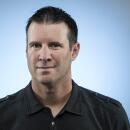Practices Open Under Cloud
- Share via
It’s a sport known for its brutality and warrior mentality. But as the first football practices of the season get underway today at many Southland high schools and colleges, coaches will do a delicate dance on the line of discipline.
They need to get players in shape to absorb the pounding of the games. But how much is too much in light of the deaths this year of Korey Stringer of the Minnesota Vikings and 10 other football players, many of whom appear to have succumbed to heat and the rigors of the sport?
High school coaches in the San Fernando Valley have been sensitive to this issue since a San Fernando High player died in 1992 while running sprints in 102-degree weather. The most recent deaths have caused San Fernando coaches to institute a more liberal water-drinking policy for this season: No longer will players need permission to leave a drill to get a drink of water.
“If you’re thirsty, go drink,” Coach Sean Blunt said. “I don’t want to wait for a kid to work up the nerve to ask me.”
At Whittier College, where midday temperatures routinely reach the 90s, Coach Bob Owens said he will break up drills with sessions on the “mental aspects” of the game, giving players rest opportunities “so kids aren’t just constantly working on conditioning.” Some workouts will be held in the evening to avoid the midday heat.
Many coaches say they are already doing all they can to ensure that players are hydrated, properly nourished and not pushed beyond their limits.
At Ventura St. Bonaventure High, mandatory water breaks are held at 10-minute intervals and a sideline station offers an inviting buffet: watermelon, orange slices, Gatorade and frozen snacks--treats to keep teens hydrated. And at Sherman Oaks Notre Dame High, players are weighed three times each day during two-a-day drills. For every pound lost, players must consume 32 ounces of fluid. Anyone who loses five pounds or more faces practice restrictions, trainer Cindy Kramer said.
Coach Toby Howell of Anaheim Western High said last week that no changes were planned, other than to make sure players get plenty of water and that workouts are not terribly strenuous.
But the recent series of deaths will undoubtedly place greater scrutiny on coaching techniques, heat-related ailments and dietary supplements favored by some athletes.
“Most of us who are in this business [already] are medically conscious of our players,” said Owens, in his sixth season. “I think what stands out is when you’re a player in the NFL, you’ve got the best possible situation. You have two or three doctors on the field and you have four or five trainers around you at all times. You’ve got the best equipment available. And yet something like that still happens. That’s a wake-up call.”
Players whose teams have already started practicing have noticed the difference. “We have so much more water and more breaks and do our drills quicker,” said free safety Jeremy Boyle of Woodland Hills El Camino Real High, who was practicing in full pads last week when the temperature was 101 degrees.
Striking the right balance at preseason training this year will be particularly challenging, given the limits placed on practice sessions and the fact that sometimes players have done little or no summer conditioning on their own. “You don’t know what kind of shape your players are in and you only have a limited amount of time to get them into shape,” Cal Lutheran University Coach Scott Squires said.
There has been a heightened awareness brought to the sport by the recent deaths.
“I think it makes us more aware of doing the same things, reemphasizing the water and breaks,” Fullerton High Coach Julian Smilowitz said. “It’s not like it used to be, when players wouldn’t have water breaks.”
Staff writers Dan Arritt, Ben Bolch, Martin Henderson, Eric Sondheimer and Eric Stephens contributed to this report.
More to Read
Go beyond the scoreboard
Get the latest on L.A.'s teams in the daily Sports Report newsletter.
You may occasionally receive promotional content from the Los Angeles Times.











